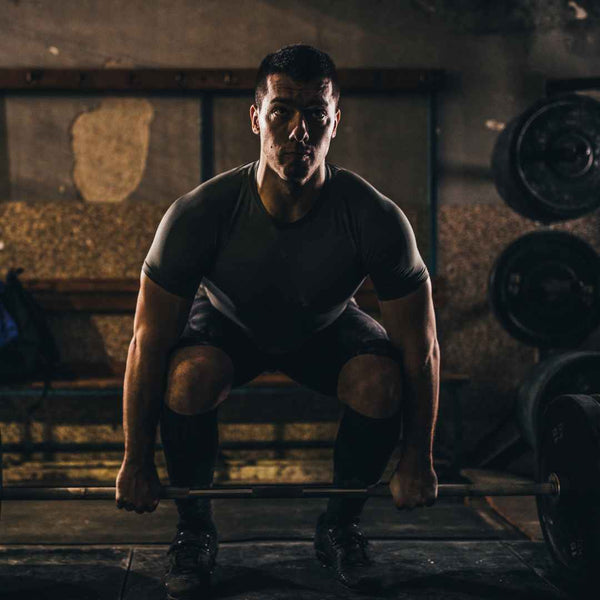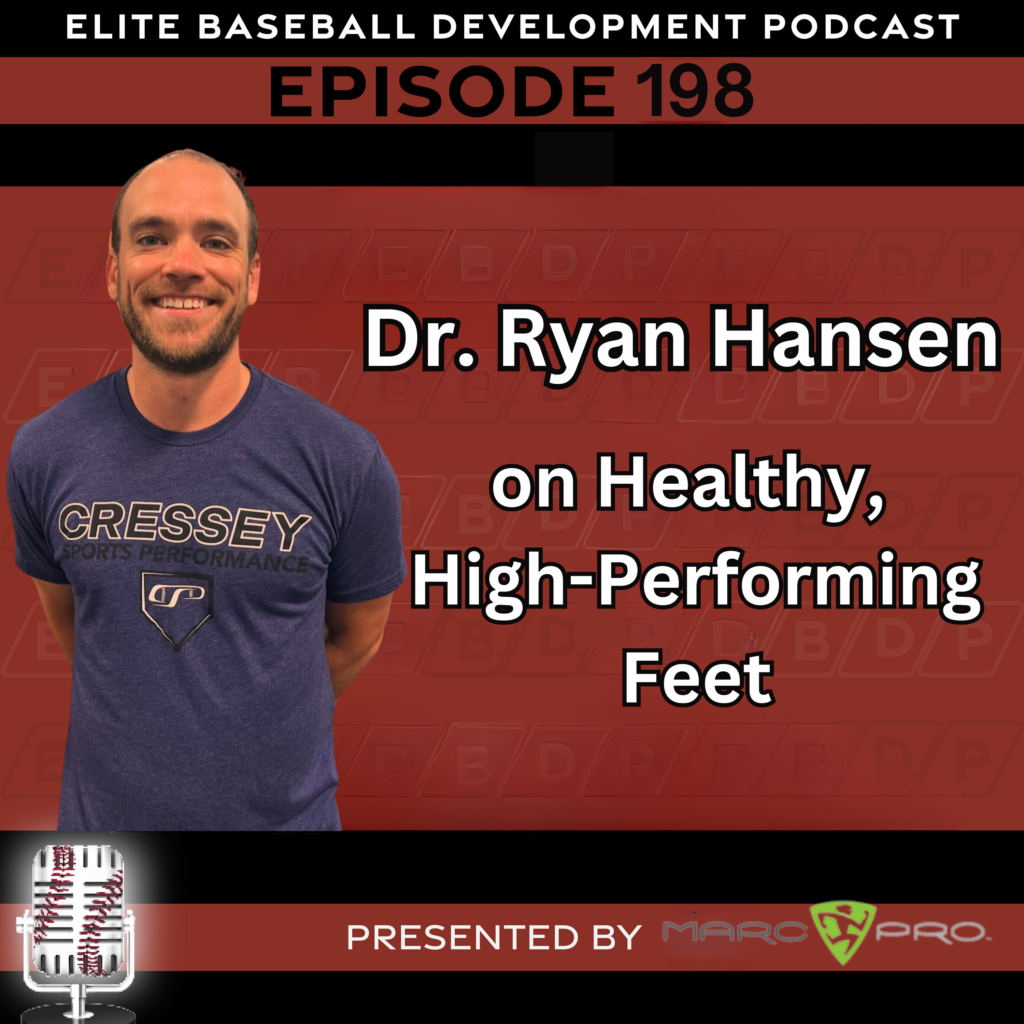Do you have nagging lower back discomfort that seems to sneak up on you during the most ordinary activities? Whether you’re battling the woes of a sedentary lifestyle or looking to fortify your core strength, this article is your roadmap to a healthier, happier lower back.
Although the upper back muscles, like the lats and rhomboids, get all the attention, the lower back is also essential. A strong lower back improves posture, increases athletic performance, and can prevent back pain.
We’re about to dive into lower back training, sharing the best exercises to alleviate discomfort and build a robust and resilient foundation for your spine. Say goodbye to aches and hello to a revitalized, pain-free back. Let’s get started!
Table of Contents:
- What Are The Muscles Of The Lower Back?
- 6 Best Exercises For Low Back
- Sample Workouts For Lower Back
- Benefits Of Lower Back Workouts
- Downsides To Lower Back Training
- How To Protect Your Lower Back
- FAQs
What Are The Muscles Of The Lower Back?
The lower back, also known as the lumbar region, contains several muscles that support the spine, stabilize the torso, and facilitate movement.
Some of the key muscles of the lower back include:
- Erector Spinae: This is a group of three muscles that run along the length of the spine. These muscles are responsible for extending, flexing, and rotating the spine. The three parts of the erector spinae are the iliocostalis, longissimus, and spinalis.
- Multifidus: These small, deep muscles are located along the spine and help stabilize the vertebrae. The multifidus plays a vital role in maintaining proper spinal alignment and providing support during various movements.
- Quadratus Lumborum (QL): The QL is on both sides of the lower back. The quadratus lumborum muscles assist in lateral flexion (side bending) of the spine and help maintain an upright posture.
- Psoas Major: Although not technically lower back muscles, the psoas, including the psoas major and minor, are hip flexor muscles that attach to the lumbar vertebrae. They are involved in walking, running, and bending at the hips.
- Latissimus Dorsi: While primarily associated with the upper back, the latissimus dorsi muscles also have attachments to the lower back. They play a role in trunk extension and adduction of the shoulder.
6 Best Exercises For Low Back
Not all exercises are created equal. While there are many great lower back movements, here are the six best.
1) Barbell Deadlift:

The barbell deadlift is a renowned strength training exercise that’s incredibly effective and fundamental in building a strong lower back and overall body strength. It’s hailed as one of the “big three” compound lifts alongside the squat and bench press.
Its ability to activate multiple muscle groups simultaneously, including the lower back, glutes, hamstrings, and even the core, makes it an excellent exercise to incorporate into your training.
For programming, aim for 3-5 sets of 3-6 repetitions with heavy weights for building lower back strength. Ensure you maintain proper form throughout the exercise, as good technique is crucial to prevent injury.
How to Perform the Barbell Deadlift:
- Begin by setting up the barbell on the ground, positioned over the middle of your feet.
- Start in an athletic stance with your feet slightly narrower than shoulder-width apart, your toes pointing forward, and your shins close to the barbell.
- Hip hinge to lower your body, keeping your back in a straight line. Grip the barbell with a double overhand or mixed grip (one palm facing you, one facing away.
- Brace your core and lift the barbell by straightening your hips and knees simultaneously. Maintain the barbell close to your body throughout the lift.
- Stand up fully, extending your hips and straightening your back.
- Lower the barbell back to the starting position by bending at your hips and knees.
Tips for the Barbell Deadlift:
- Maintain a straight back throughout the lift to protect your spine.
- Use proper lifting shoes or footwear with a solid, flat sole.
- Keep your arms straight while lifting the weight.
- Avoid rounding your back or jerking the weight up, which can lead to injury.
- If you’re new to deadlifting or have any pre-existing lower back issues, consider seeking guidance from a fitness professional to ensure the correct form and technique.
2) Barbell Good Morning:

The barbell good morning is a fantastic exercise for building your lower back, hamstrings, and glutes while enhancing overall core stability. This exercise is named after the motion you make when you greet someone with a polite bow, and it’s a versatile addition to any lower-body workout routine.
What makes the Barbell Good Morning an excellent choice for lower back development is its emphasis on hip hinging, a movement that helps improve your posture, protect your spine, and build functional strength.
For this exercise, start with 3-4 sets of 6-12 repetitions for building lower back strength with the barbell good morning. Use a moderate weight that challenges you while allowing you to maintain proper form.
How to Perform the Barbell Good Morning:
- Start by placing a barbell on your upper back below your shoulders. You can use a squat rack to set the bar at an appropriate height.
- Stand with your feet shoulder-width apart and your knees bent.
- Keeping your back straight and core engaged, hinge your hips to bend forward. Lower your torso while maintaining a slight bend in your knees.
- Continue bending at the hips until your torso is parallel to the ground or as far as your flexibility allows.
- Reverse the movement
- Begin by driving your hips forward and standing back up to the starting position.
Tips for the Good Morning Exercise:
- If you have never done this exercise, begin with a lightweight or just the bar to master the movement and ensure good form.
- Focus on bracing and engage your core muscles to stabilize your spine.
- Always perform the barbell good morning with a controlled tempo to minimize the risk of injury and maximize its benefits for your lower back and posterior chain.
3) Dumbbell Romanian Deadlift:
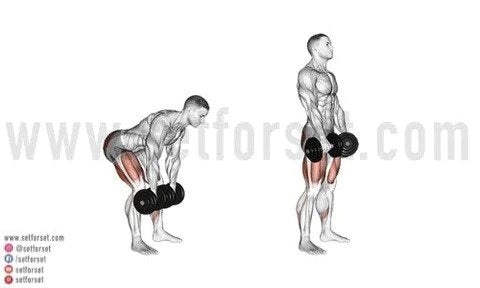
The dumbbell Romanian deadlift, often called the “DB RDL” for short, is a highly effective exercise for targeting the lower back, hamstrings, and glutes.
It’s a variation of the traditional deadlift that uses dumbbells, making it an accessible and versatile exercise for building lower back strength and overall posterior chain development. This exercise is particularly great for strengthening the lower back because it emphasizes the hip hinge movement more than a traditional deadlift.
Aim for 3-4 sets of 8-12 repetitions to build lower back strength with the dumbbell Romanian deadlift. Use a weight that challenges you while allowing you to maintain proper form.
How to Perform the Dumbbell Romanian Deadlift:
- Begin by holding a dumbbell in each hand with your feet hip-width apart.
- Stand up straight, with a slight bend in your knees.
- With your back flat and your core braced, start by driving your hips back and lowering your upper body toward the ground.
- Lower the dumbbells along the front of your legs while maintaining a straight back. Keep the dumbbells close to your body throughout the descent.
- Slowly lower the dumbbells until you feel a stretch in your hamstrings or when your upper body is parallel to the ground, whichever comes first.
- Reverse the movement by driving your hips forward and returning to the starting position.
Tips for the Romanian Deadlift:
- Start with lighter dumbbells to master the movement and ensure proper form.
- Maintain a neutral spine throughout the exercise to prevent any risk of lower back strain. Keep the weights within the range of motion your mobility will allow with a neutral spine. Stopping mid-shin is fine.
- Keep a slight bend in your knees.
4) Kettlebell Swing:

The kettlebell swing is a dynamic full-body movement that offers a unique blend of conditioning and lower back strengthening.
It’s a favorite among fitness enthusiasts for its efficiency in targeting the posterior chain, including the lower back, glutes, and hamstrings, while providing an excellent cardiovascular workout. This exercise is fantastic for building lower back strength and improving explosive power and overall endurance.
Aim for 3-4 sets of 10-2- repetitions to build lower back strength and improve cardiovascular fitness with the kettlebell swing. You can also make this harder by performing the swing with one arm, and then switching the kettlebell and working the opposite arm.
And to learn more about the kettlebell swing, read: What Muscles Are Worked During The Kettlebell Swing?
How to Perform the Kettlebell Swing:
- Begin by standing with your feet flat on the floor shoulder-width apart and a kettlebell on the ground before you.
- Hip hinge to lower your body, maintaining your knees bent.
- Reach for the kettlebell with both hands, keeping your back flat and chest up.
- Swing the kettlebell back between your legs while maintaining a strong, flat back.
- Explosively extend your hips and stand up straight, swinging the kettlebell forward to shoulder height.
- Let the kettlebell swing back between your legs, bending at the hips, and repeat the motion.
Tips for the KB Swing:
- To prevent injury, focus on proper hip hinge technique and avoid rounding your lower back during the swing.
- Use your hips to generate power, and let your arms remain relatively passive, acting as a hinge for the kettlebell. Avoid squatting the weight up during the swing.
- Start with a light kettlebell to master the form, and gradually increase the weight as you become more comfortable with the exercise.
5) 45 Degree Back Extension:
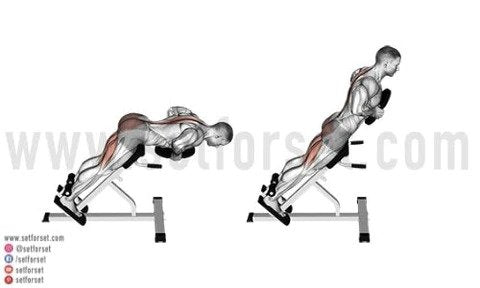
The 45-degree back extension, also known as the hyperextension, is a powerful exercise for targeting and strengthening the lower back, hamstrings, and glutes. It’s a valuable addition to any workout routine because it directly engages the lower back muscles while being easy to perform and relatively safe.
For building lower back strength and endurance with the 45-degree back extension, aim for 3-4 sets of 10-15 repetitions. Start with your body weight and add resistance gradually as you become more proficient.
How to Perform the 45-Degree Back Extension:
- Begin by positioning yourself on a 45-degree back extension bench or Roman chair. Secure your feet under the foot pads. Retract your shoulder blades.
- Cross your arms over your chest or place your hands behind your head, whichever is more comfortable.
- With a straight back and engaged core, lower your upper body forward, allowing your lower back to arch naturally.
- Slowly lift your torso back to the starting position, keeping your body straight. Return to the starting position, and repeat.
Tips for 45-Degree Back Extension:
- Focus on controlled movements and avoid using momentum to swing your body.
- Keep your neck in line with your spine and avoid excessive neck extension.
- Once ready, you can add resistance by holding weight plates, dumbbells, kettlebells, or bands.
6) Superman:
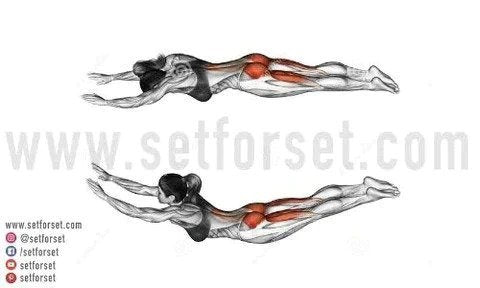
The Superman exercise is a simple yet effective way to target and strengthen your lower back.
It’s a fantastic addition to your routine to improve your lower back strength, posture, and overall spine stability. The Superman is a popular movement because it’s a bodyweight exercise that requires no equipment, making it accessible to individuals of all fitness levels.
Aim for 3-4 sets of 10-20 repetitions to strengthen the lower back with the Superman exercise. Start with a manageable number of reps and increase as you become more comfortable with the movement.
How to Perform the Superman Exercise:
- Begin by lying face down on the floor or a mat with your arms extended overhead and your legs straight.
- Perform the movement by lifting your arms, chest, and legs by arching your back. Keep your arms aligned and left leg in line with your right leg.
- Hold this position for a few seconds, focusing on squeezing your lower back, glutes, and hamstrings.
- Slowly lower your arms, chest, and legs back to the starting position.
- Repeat the movement for the programmed number of repetitions.
Tips for the Superman Exercise:
- Keep your neck neutral, looking down at the ground to avoid straining your neck muscles.
- Focus on engaging your lower back, glutes, and hamstrings to support your spine during the lift. Pause at the top to increase difficulty.
For more information about the superman and hyperextension, read our article on the 18 Back Extension Exercises.
Sample Lower Back Workout
Here is a sample lower back workout you can add to your back day workout.
|
Exercise |
Sets |
Reps |
|
Barbell Deadlift |
4 |
4-6 |
|
Barbell Good Morning |
3 |
6-8 |
|
Dumbbell Romanian Deadlift |
3 |
8-10 |
|
45 Degree Weighted Back Extension |
3 |
10-12 |
|
Kettlebell Swing |
3 |
12-15 |
Benefits Of Lower Back Workouts
Lower back workouts provide numerous benefits that contribute to overall health and fitness. Here are the top five benefits of incorporating lower back training into your training routine:
1) Pain and Injury Prevention:
Building the lower back can reduce lower back pain and injury, which is especially important for individuals with sedentary jobs or engaging in activities that strain the lower back.
A 2016 systematic review showed back pain was decreased by 52.5{32c02201c4e0b91ecf15bfd3deecd875caca8b9615db42cfd45ce3d8de8d0829} in the lower back training group compared to no significant change in the control (non-lower back training) group1. This means that it’s important to prioritize low back pain exercises!
2) Improved Posture and Spinal Alignment:
Weak lower back muscles can contribute to bad posture and spinal misalignment, which can cause pain in a wide range of activities, including everything from standing up to bending over, and even when you lie on your back. Lower back workouts help correct these issues by strengthening the muscles responsible for upright posture.
Better posture enhances physical appearance and reduces lower back pain. One person on Reddit explains,”I’ve noticed 2 things in the last 3 months of working my lower back: 1- My posture is better. 2- My back hurts less.” (source)
3) Enhanced Core Stability:
The lower back is intricately connected to the core muscles. Strengthening the lower back in conjunction with the core improves overall core stability. This stability is crucial for maintaining balance, supporting the spine, and preventing falls and injuries.
4) Functional Strength for Daily Activities:
Lower back exercises often mimic real-life movements like lifting, bending, and twisting. By incorporating these movements into your workouts, you develop functional strength that improves performance during everyday activities.
5) Increased Athletic Performance:
Athletes, in particular, benefit from lower back training. A strong lower back enhances explosive power, improves muscular strength, and increases your physical capability. Research shows that increased strength in the deadlift improves vertical jump performance2.
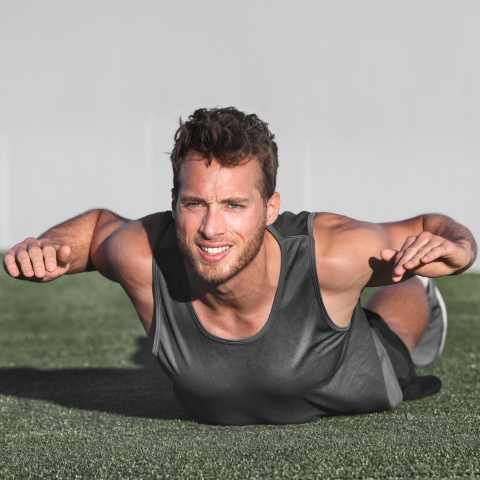
Downsides To Lower Back Training
While lower back training offers numerous benefits, there are also a few downsides and risks associated with it. Awareness of these downsides is essential to ensure safe and effective lower back workouts.
Here are three potential downsides:
- Risk of Injury: Improper form or overloading during lower back exercises can lead to injuries. Strains, sprains, or even more severe issues like herniated discs can occur if exercises are not performed correctly. It’s crucial to prioritize proper technique and gradually increase the load to minimize the risk of injury.
- Exacerbating Existing Conditions: Individuals with pre-existing lower back conditions, such as herniated discs or chronic pain, may find specific lower back exercises make their back pain worse.
- Muscle Imbalances: Focusing too heavily on lower back training while neglecting other muscle groups, especially the core and abdominal muscles, can lead to muscle imbalances. These imbalances may affect posture and increase the risk of injury in other areas of the body.
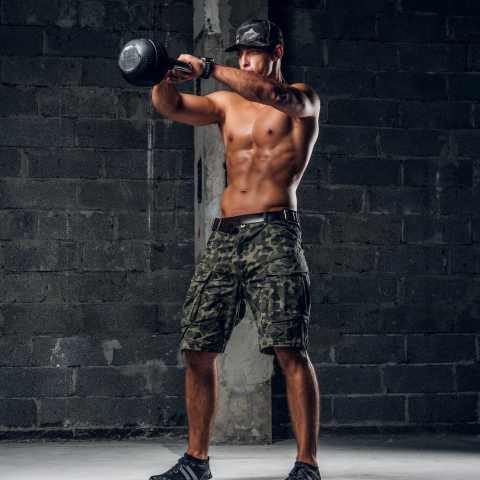
How To Protect Your Lower Back
Protecting your lower back from injury during lifts and preventing pain in general requires a combination of proper technique, bracing, and consistent training.
Here are some key strategies:
- Learn Proper Form: First and foremost, ensure you’re using the correct form during exercises that involve your lower back, such as deadlifts or good mornings. Good technique includes maintaining a neutral spine, bracing your core, and controlling the weight.
- Strengthen Your Core: A strong core and abdominal muscles support your lower back. Incorporate core-strengthening exercises, such as a plank, side plank, ab wheel, or leg raise, into your routine.
- Practice Core Bracing: Use the Valsalva maneuver anytime you are lifting heavy weights on a compound exercise. The Valsalva maneuver involves taking a big breath, bracing your core as if you’re about to get punched in the stomach, and holding your breath while performing the lift. This technique helps stabilize your spine and protects your lower back.
- Progress Gradually: Avoid the temptation to progressive overload too quickly. Start with manageable loads and progressively increase the weight as your strength and technique improve. Sudden increases in weight can place excessive strain on the lower back.
- Warm-Up Properly: Always warm up before engaging in heavy lower back exercises. A warm-up increases muscle blood flow, making them more pliable and less injury-prone. Incorporate a dynamic warm-up and light aerobic activity to prepare your body for the workout.

FAQs
Here are some answers to common questions about lower back training.
Can squats train lower back?
Squats primarily target the lower body (quadriceps, hamstrings, and glutes) but also engage the lower back muscles as stabilizers. While squats can help strengthen the lower back indirectly, they are not a specific lower back movement.
Do hip thrusts work the lower back?
Hip thrusts mainly target the glutes and hamstrings and do not directly work the lower back. However, they can indirectly engage the lower back as a stabilizing muscle during the exercise.
What are the signs of a weak lower back?
Signs of a weak lower back may include persistent pain, poor posture, difficulty with lifting or bending, and limited mobility or flexibility in the lower spine.
How do I know if my core is weak?
Signs of a weak core can include poor posture, lower back pain, difficulty with balance and stability, and challenges with activities that require core strength, such as lifting heavy objects or maintaining a stable torso during exercises.
Does a weak back mean bad posture?
A weak back can contribute to bad posture, as it may lead to muscle imbalances that affect the alignment of the spine and shoulders. However, bad posture can result from various factors, including weak core muscles and prolonged sitting or slouching.

Summary Of Lower Back Gym Exercises
A strong lower back is not just about looking good; it’s about feeling great and maintaining a functional body. The exercises we’ve explored are your secret weapons for building resilience, preventing pain, and unlocking your full potential.
One last thing. Using good technique is always important, but it is critical with lower back training. One tiny error can lead to pain. I don’t say this to scare you but to emphasize the importance. That said, the stronger you get, the more resilient your lower back becomes.
By prioritizing lower back training, you’ll be on your way to enhancing your physical performance and enjoying life without the burden of lower back pain. All that is left to do is get to the gym.
For a well-rounded program, balance your lower back workouts with these Upper Back Exercises. Or, for a full routine, check out our Ultimate Back Day Workout!
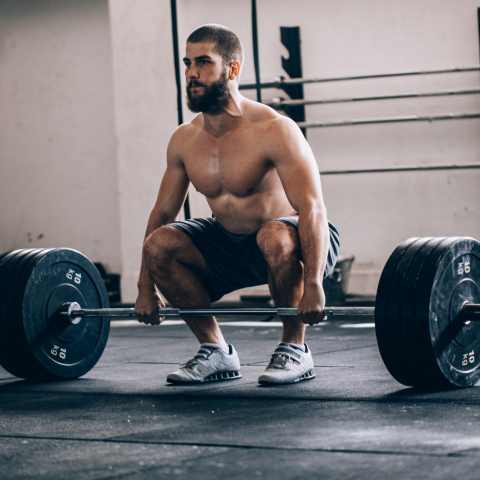
References:
- Gordon, R., & Bloxham, S. (2016). A Systematic Review of the Effects of Exercise and Physical Activity on Non-Specific Chronic Low Back Pain. Healthcare, 4(2). https://doi.org/10.3390/healthcare4020022
- Thompson, B. J., Stock, M. S., Shields, J. E., Luera, M. J., Munayer, I. K., Mota, J. A., Carrillo, E. C., & Olinghouse, K. D. (2015). Barbell deadlift training increases the rate of torque development and vertical jump performance in novices. Journal of strength and conditioning research, 29(1), 1–10. https://doi.org/10.1519/JSC.0000000000000691
